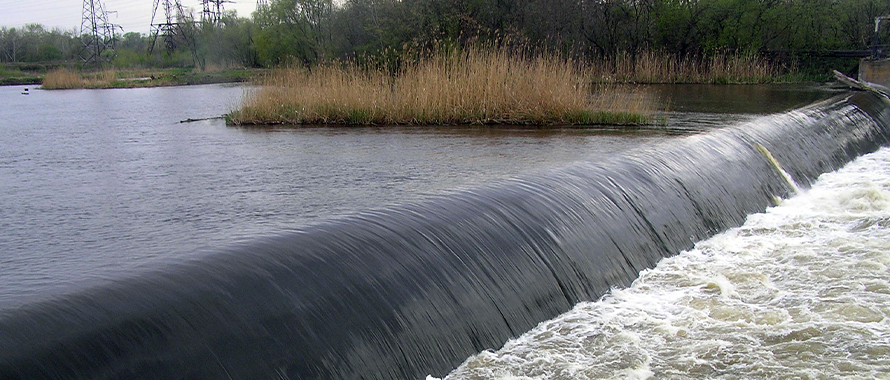Approximately 10,000 Michigan residents were forced to evacuate their homes on May 19 after catastrophic dam failures sent flood waters rushing through Midland and Saginaw counties, destroying homes, decimating roads and bridges, and leaving one small village in near ruin. Heavy rainfall in the area caused water levels in the Tittabawassee River to surge, leading to the failure of both the Edenville and Sanford dams.
Experts are calling last week’s flood a “500-year flood event,” as floods of its scope and severity are unlikely to occur more than once every 500 years.

Being hit with a 500-year flood during a once-in-a-lifetime health crisis is especially devastating. A flood like this can be crippling for many years and recovery requires extensive time, effort and cooperation.
The actual costs to repair and rebuild homes, businesses and infrastructure in counties where Michigan Governor Gretchen Whitmer has declared a state of emergency—Midland, Gladwin, Saginaw, Arenac and Iosco—are still being compiled. However, Whitmer’s letter requesting federal emergency aid said Midland County’s 2018 hazard mitigation plan—for a failure of the Edenville Dam alone—included a total building value of $878,974,848.
Concerns were raised over potential contamination from flood waters commingling with containment ponds at Dow Chemical, which has headquarters and chemical manufacturing operations in the city of Midland. The company has maintained its emergency flood preparedness measures are in place and the overflow poses no danger to the public or the environment.
Responding to the natural disaster during the ongoing COVID-19 pandemic presented significant challenges, according to officials.
“Being hit with a 500-year flood during a once-in-a-lifetime health crisis is exceptionally devastating,” said Brad Turner, National Product Manager, Flood, Burns & Wilcox, Morehead City, North Carolina. “A flood like this can be crippling for many years and recovery requires extensive time, effort and cooperation. Unfortunately, a great many homeowners do not have Flood Insurance.”
Outdated maps, misconceptions leave homeowners with hefty expenses
One homeowner affected by the mid-Michigan flooding reported his basement filled with 7 feet of water, destroying appliances and causing a wall to cave in. He did not believe he needed to purchase Flood Insurance, he said, because his home is not in a high-risk zone on U.S. Federal Emergency Management Agency (FEMA) flood maps. His situation may be the norm, as one report indicated that most residents in his area lacked Flood Insurance.
Standard Homeowner’s Insurance does not cover flood in the U.S., and many homebuyers purchase Flood Insurance only when their mortgage company requires it based on their home’s risk status on FEMA flood maps, Turner explained. Properties in moderate- and low-risk zones could still experience flooding, however. According to FEMA, 20 percent of its National Flood Insurance Program (NFIP) claims are for damaged properties in low- and moderate-risk flood zones.
Additionally, flood maps are likely not based on the most recent data available. “In the best-case scenario communities are mapped for flood risk every five years, meaning homeowners are basing decisions on what is often outdated information,” said Turner.
One homeowner in Standish City, MI, estimated it would cost $50,000 to repair flooding damage to a finished basement—a likely accurate estimate given that the average flood claim payout from the NFIP in 2019 was $52,000. In Canada, a flooded basement costs an average of $43,000 to repair.
Even minor flooding can cause major losses, experts have pointed out. A single inch of water can cause $25,000 in damages.
“Flood causes more uninsured loss than any other peril in the United States,” Turner explained. Nevertheless, a large percentage of homeowners affected by major flood events lack Flood Insurance. “It is especially unfortunate because Flood Insurance is relatively inexpensive — less than $1,000 per year for most homeowners and as little as $500 per year, depending on the value of the home.”
Flood risks increasing, lack of insurance impedes recovery
Extreme weather related to climate change increases the risk of flooding. Scientists estimate “100-year floods” could become an annual occurrence in New England and common in other areas, including Canada. Eastern Canada could experience flood levels exceeding record 2017 levels, according to some estimates.
Last week’s flooding in Michigan illustrates the risks posed by intensifying severe weather events and aging infrastructure. Federal regulators revoked the 96-year-old Edenville Dam’s hydropower generating license in 2018 over failure to address safety issues that had been cited over the course of several years.
“A great deal of land in the western and midwestern U.S. is protected by dams and levees,” Turner said, adding that urbanization and the removal of natural drainage can also increase flood risks. “When man gets in the way of nature, nature tends to win in the long run.”

If you do not have Flood Insurance and your home suffers major damage 14 years into a 30-year mortgage, you could find yourself in dire financial straits.
Despite mounting flood risks, a recent report showed more homeowners are choosing to forgo Flood Insurance coverage. The lack of protection afforded by Flood Insurance can delay recovery and leave homeowners to contend with longstanding, substantial financial consequences. Ninety percent of Sand Springs, Oklahoma residents were without Flood Insurance when they were hit by a flood last May, which has reportedly contributed to the area’s slow recovery over the past year.
“Consider how long it takes to build one building and then consider what is required for an entire community to recover—when all proper insurance coverage is in place and funding is available,” Turner said, pointing out that Houston, Texas is still recovering from Hurricane Harvey in 2017. “Water does a massive amount of damage and it only takes a couple of inches to wreak havoc.”
Although FEMA assists some flood victims with low-interest loans, homeowners are often left scrambling to mitigate damages in the wake of a flood. Months after Hurricane Harvey, mortgage companies saw a spike in missed payments.
“If you do not have Flood Insurance and your home suffers major damage 14 years into a 30-year mortgage, you could find yourself in dire financial straits,” said Turner. “That is why it is so important to consider investing in Flood Insurance.”
New tools and expert guidance aid risk, coverage assessments
New technology is making it possible for homeowners to assess their need for Flood Insurance without relying solely upon FEMA flood maps. Although not yet used by the NFIP, private market technology that incorporates climate change data and past flood events to evaluate a property’s risk of exposure to flood events is available.

Regrettably, too many homeowners think they cannot afford Flood Insurance until they are faced with a situation where the full financial ramifications of being without coverage become apparent.
“The most important thing is to do your due diligence as a homeowner and consult an insurance broker or agent who has access to that sort of technology,” Turner said, adding that Flood Insurance is a very niche specialty. “You want to partner with somebody who is an expert and deals with it every day. It is very hard to assess the risks unless you know what to look for.”
Understanding your options is also key. Enhancements available with private Flood Insurance policies, such as Replacement Cost for home contents without depreciation, or Indirect Loss that can include loss of use, are important considerations. “Following a major flood, homeowners will likely be displaced for what could be a year or more, living out of hotels, eating out,” he explained. “In a catastrophic scenario like what just occurred in Michigan, Indirect Loss costs can be just as high as those for Direct Loss.”
Flooding often results in enormous expenses for which many homeowners are unprepared. That flood events are often difficult to predict compounds the need for protection.
“Regrettably, too many homeowners think they cannot afford Flood Insurance until they are faced with a situation where the full financial ramifications of being without coverage become apparent,” Turner said.




